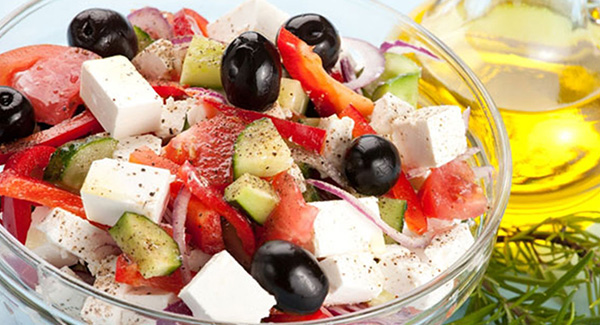Best Foods for Rheumatoid Arthritis
Making healthy food choices can help reduce inflammation from rheumatoid arthritis.
Diet won’t cure rheumatoid arthritis (RA), but the right food choices can help by controlling the inflammation that wreaks havoc in the body, delivering nutrients your body needs and helping you maintain a healthy weight. That’s important because excess weight adds to pressure on achy joints and can make certain RA meds less effective. What’s more, body fat produces proteins called cytokines that promote inflammation.
Studies show that a Mediterranean diet, with lots of fruits and vegetables, whole grains and healthy fats is a good choice for people with RA. Here’s a look at some foods you should be eating.
Fatty fish. Salmon, tuna, sardines, herring and other cold-water fish are rich in omega -3 fatty acids, which may help control inflammation. Your body needs a healthy balance of omega-3 and omega-6 fatty acids. Researchers have found that a greater ratio of omega-6s to omega-3s is associated with an increase in chronic inflammatory diseases like RA. So it’s important to reduce omega-6s – which may provoke inflammation and are found in meats, certain oils and in fried and processed foods that contain those oils – and increase omega-3s.
What you put on your plate can play a role in how you feel. This article breaks down foods that may help ease RA symptoms and explains the science in everyday terms. It feels practical, not overwhelming. Help keep this kind of helpful guidance within reach. Consider a gift today.
Fruits and veggies. Fruits and vegetables are rich in antioxidants, which help stabilize molecules called free radicals that can trigger inflammation and damage cells. They’re also packed with vitamins and minerals the body needs and in polyphenols, all of which may help lower C-reactive protein (CRP), a marker of inflammation. To get the greatest health benefits, eat several types of fresh or frozen fruits each day, but watch out for sugar content in frozen options. Eat a colorful variety of veggies to get the most nutrients. Aim for two cups of fruits and two and a half to three cups of vegetables per day – fewer if you get less than 30 minutes of exercise a day and more if you’re more active.
Whole grains. Oats, whole wheat, brown rice, quinoa and other whole grains may lower levels of CRP and reduce the risk of heart disease, which is elevated in people with RA. Whole grains are higher in nutrients and fiber than refined grains. Plus, many products with refined grains contain ingredients that are not healthful, such as added sugars and saturated fats. Read labels and choose breads, cereals and other products that specify a whole grain as a primary ingredient.
Peas and beans. These legumes are a great source of protein, which is important for muscle health – and people with RA are prone to muscle loss. What’s more, peas and beans are practically fat free, contain antioxidants, and some are rich in folic acid, magnesium, iron, zinc and potassium, all known for their heart and immune-system benefits. Black, garbanzo and red kidney beans and black-eyed peas are good choices.
Nuts. Full of healthful monounsaturated fat, nuts are recognized for their heart-protective properties and important nutrients. Try pine nuts, pistachios, hazelnuts and almonds. Walnuts are particularly good for people with RA because they’re high in omega-3 fatty acids. (Ground flaxseed is another good plant source of omega-3s.) But don’t go overboard eating nuts; they contain healthy fats, but they are also high in calories.
Olive oil. Use olive oil instead of other oils and fats. In addition to healthy monounsaturated fat, it contains a compound called oleocanthal that reduces inflammation and acts like ibuprofen in alleviating pain. But eat it in moderation; as with all oils, it’s a fat that can lead to weight gain.
For more information about healthy eating for arthritis, click here.
You can also view past webinars about good nutrition for arthritis, here.
When food advice is easy to understand, people are more likely to use it. Your support helps keep this kind of helpful information available to everyone. Give today to support informed living.
Diagnosed With Rheumatoid Arthritis?
Get the latest news and tips about living with Rheumatoid Arthritis in the Living Your Yes! e-newsletter.



